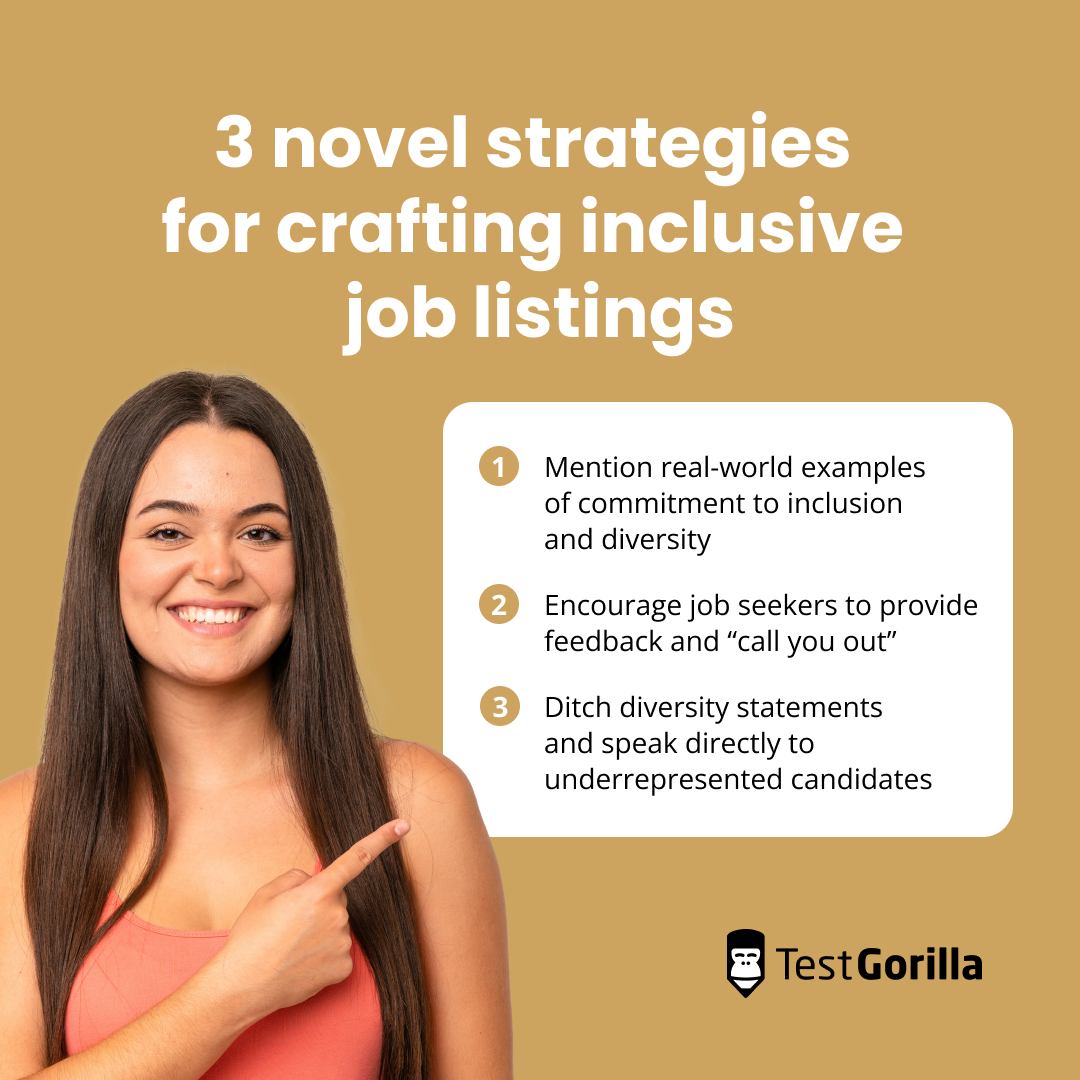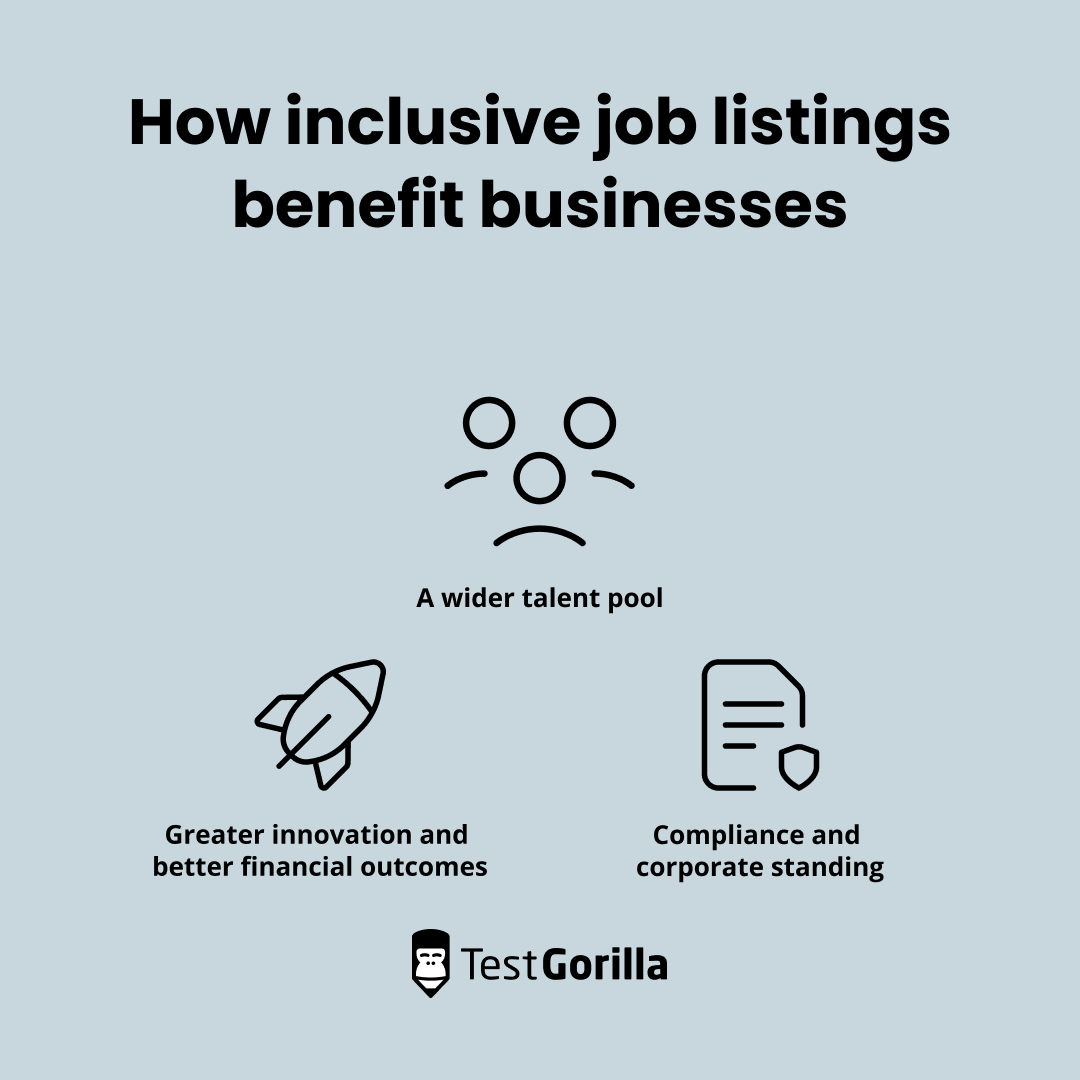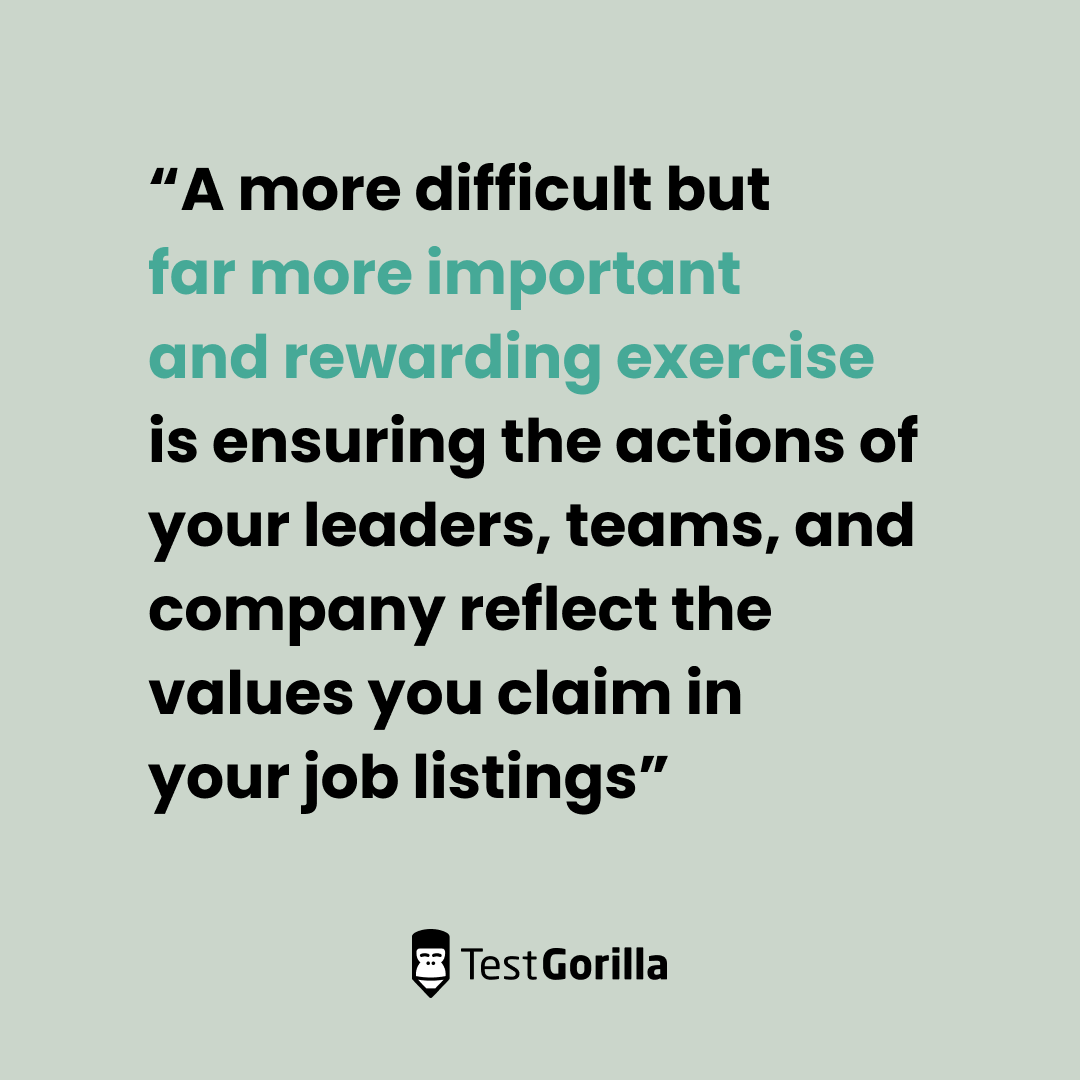Inclusive job listings are an essential first step to creating a diverse workforce, which studies show leads to greater innovation and problem-solving, reduced turnover, and better overall financial performance. They’re also the best way to ensure you’re not unintentionally driving away ideal candidates.
Of course, inclusive job listings are nothing new. But as society evolves and we learn more about social inequities, companies must adopt new approaches to inclusivity, grounded in authenticity and action.
In this article, we look at three new strategies to create inclusive job listings for your applicants of today and tomorrow.
What is an inclusive job listing – and what is it not?
An inclusive job listing is one that encourages applicants from all backgrounds and personal situations to apply. It should be equally attractive and relevant to all qualified candidates, regardless of their gender, racial identity or ethnicity, age, sexual orientation, socioeconomic status, and disability status.
In reality, writing inclusive job listings is harder than it may seem. Social norms, everyday language, and the personal biases we carry within us can “leak” into the language we use, our design choices, and even how we think about roles, productivity, compensation, and culture. Some examples of what might prevent a job listing from being inclusive include:
Gendered language – job listings that contain characteristically “masculine” words might deter women from applying.
Asking for “English language skills” may deter non-native English speakers from applying.
Requesting degree requirements or graduates from “top schools” can deter qualified candidates who have taken other paths to learn their skills from applying.
Recognizing this, society’s definition of inclusivity and its expectations of businesses have evolved significantly over the last few years. Simply publishing a diversity statement signed off by your CEO no longer cuts it.
An inclusive job listing isn’t just a job listing with a DE&I statement attached
When it comes to DEI, talk is cheap. It’s fairly easy to make impressive statements about inclusivity on job listings, or to include gender-inclusive language. But if those statements turn out to be untrue, or your hiring process isn’t actually gender inclusive, then you’ll quickly lose valuable candidates as they move through the pipeline. It would also indicate much larger problems for DEI within your organization.
The worlds of business and social equity come together in various, complex ways. To be truly inclusive, employers need to take these into account; it’s not enough to simply talk the talk.
To help you walk the walk, too, we’ve put together three novel strategies for crafting inclusive job listings – all of which involve going beyond words and bringing real-world examples of your commitment to inclusion into your job listings.
3 novel strategies for crafting inclusive job listings
Here are three novel strategies for crafting truly inclusive job listings.
1. Mention real-world examples of commitment to inclusion and diversity
When it comes to the youngest generation of job seekers, “intention is not enough,” says business analyst Lauren Romansky. “They want to see results, and they want to see action to back it up.”
To really resonate with job-seekers, companies need to go beyond boilerplate diversity statements. Instead, offer proof of your company’s commitment to inclusivity. What steps have been taken to ensure diversity is championed within the company?
For example, are you installing gender-neutral restrooms? Do you provide time off for non-federal holidays of all faiths and creeds? Do you offer both paternity and maternity leave? Does your company participate in any community outreach initiatives?
Think carefully about the real-world changes your company has made, and find space for these throughout the job description. Actions speak louder than words, after all – so bring your actions into the words of your job listings.
2. Encourage job seekers to provide feedback and “call you out”
Consider adding a statement like this one to your job listing:
“We are committed to creating a diverse and inclusive workforce. If during any part of the application or onboarding process, you feel we haven’t done everything we can to champion these values, please contact our Head of DEI, Kiran Patel, at diversity@acme.com.”
This is valuable for two reasons.
First, it helps demonstrate to job-seekers that you’re committed to inclusivity throughout the hiring process and creates a sense of dialogue early on. It shows that you value the candidate’s opinion, which is important, as nobody is better placed to speak to their experience – both of your ad and the job market generally.
Secondly, it gives you the opportunity to learn more about your candidates and what they value. DEI is a constantly evolving landscape. Each generation, population, and individual applicant has unique expectations and worldviews. Their comments, suggestions, and frustrations will help you refine your process and better serve the job-seeking community.
3. Ditch diversity statements and speak directly to underrepresented candidates
Consider this excerpt from a Nestlé Purina job listing:
“To our veterans and separated service members, you're at the forefront of our minds as we recruit top talent to join Nestlé Purina. The skills you've gained while serving our country, such as flexibility, agility, and leadership, are much like the skills that will make you successful in this role. We hope you'll consider sharing in our mission—you'll join a cohort of others who have chosen to call Nestlé Purina home.”
This has far more impact than a general diversity statement because it speaks directly to veterans and service members, not “about” them.
Another important element is that it connects the skills service members have learned – such as flexibility, agility, and leadership – with the role in question. Many service members wonder if they should include their military service on their resume for fear that employers will dismiss it as irrelevant to the job.
By understanding this fear and demonstrating an understanding of the relevant skills service members develop on duty, this job listing goes a long way in actively encouraging this underrepresented group to apply.
The best insights on HR and recruitment, delivered to your inbox.
Biweekly updates. No spam. Unsubscribe any time.
How do inclusive job listings benefit businesses?
Inclusive job listings are a fundamental step toward breaking down systemic barriers and biases in the hiring process. But are they good for business?
For businesses and individuals who see these values as important, ensuring they’re reflected in the hiring process is a no-brainer. But there are also many commercial reasons why businesses should invest in diversity and inclusivity.
A wider talent pool
Finding the perfect fit is hard enough, and limiting your candidate pool by failing to create inclusive job listings further reduces those chances.
Your job listing might be a skilled candidate’s first encounter with your company – if they don’t feel included by what they read, they’ll perhaps go somewhere else. When this adds up, your talent pool can shrink significantly: One survey found that 64% of jobseekers would not respond to a badly written job ad, and 60% find jargon in job listings “annoying.”
Why take that risk? Inclusive job listings will not only increase the overall size of your candidate pool, but also enrich it with candidates who possess unique perspectives and valuable skills.
Greater innovation and better financial outcomes
Inclusive job listings will lead to a more diverse talent pool and, as a result, take you one step closer to a more diverse workforce.
Companies with above-average diversity and investment in Diversity, Equity, and Inclusivity (DEI) are more innovative and adaptable to change than their competitors. Diverse teams are better at decision-making, better at problem-solving, and more effective at risk management.
Indeed, many studies confirm that greater DEI has a direct, positive impact on revenue through diverse channels, including:
Cash flow return on investment
EBIT (Earnings Before Interest and Taxes), EBITDA (Earnings Before Interest, Taxes, Depreciation, and Amortization), gross, net, and operating profit margins
Investment performance and market value
Return on Assets (ROA), Equity (ROE), and Sales (ROS)
Sales performance and revenue
Stock returns
In the long term then, creating inclusive job listings can improve your bottom line significantly.
Compliance and corporate standing
Discrimination based on sex (including sexual orientation and gender identity), race, age, disability, national origin, religion or creed, and genetic information is illegal. The penalties for violating federal anti-discrimination laws are severe.
Beyond this, organizations with inclusive hiring practices are 57.8% more likely to enjoy a strong reputation among employees, customers, and stakeholders.
Conversely, companies that preach but don’t practice DEI are subject to harsh criticism. And rightly so: “Diversity washing” negatively impacts job-seekers and employees, is seen as a betrayal by customers, and goes against businesses’ own financial best interests.
Going beyond inclusive job listings
You can’t achieve diversity, equity, and inclusivity through words alone. A more difficult but far more important and rewarding exercise is ensuring the actions of your leaders, teams, and company reflect the values you claim in your job listings.
To create a truly inclusive workplace requires critical thought and organizational introspection. Job listings are a good place to start, and inclusive job ads are an essential element to attracting top talent. Just make sure the rest of your hiring process, and your company culture as a whole, is inclusive, too.
To learn more about building an inclusive hiring process with skills-based hiring, check out:
Related posts
You've scrolled this far
Why not try TestGorilla for free, and see what happens when you put skills first.

















